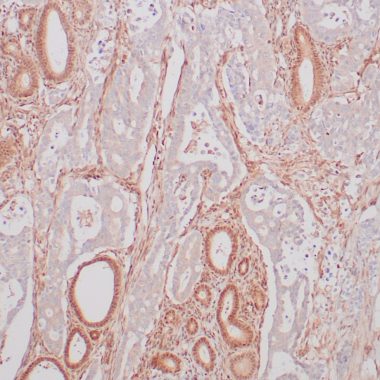Signaling from the ligand-activated membrane receptor serine/threonine kinases to nuclear targets is mediated by a set of evolutionarily conserved proteins known as DPC4. Upon ligand binding, the receptors of the TGF-β family phosphorylate SMAD proteins (SMAD1 and SMAD2). These proteins then move into the nucleus, where they activate transcription. To carry out this function, the receptor activated SMAD1 and 2 require association with the DPC4 that is always deleted in pancreatic carcinoma, locus 4, also known as SMAD4. SMAD4/DPC4 is also implicated as a tumor suppressor since it is inactivated in more than half of pancreatic carcinomas and to a lesser extent in various cancers. The lack of SMAD4 expression is present in approximately 80% of cases of pancreatic adenocarcinoma but rarely in endometrial (0%), colorectal (0%), ovarian (3%), lung (0%), breast (2%), adenocarcinomas, and malignant melanoma (4%). SMAD4is an essential marker for confirming a diagnosis of pancreatic adenocarcinoma.

